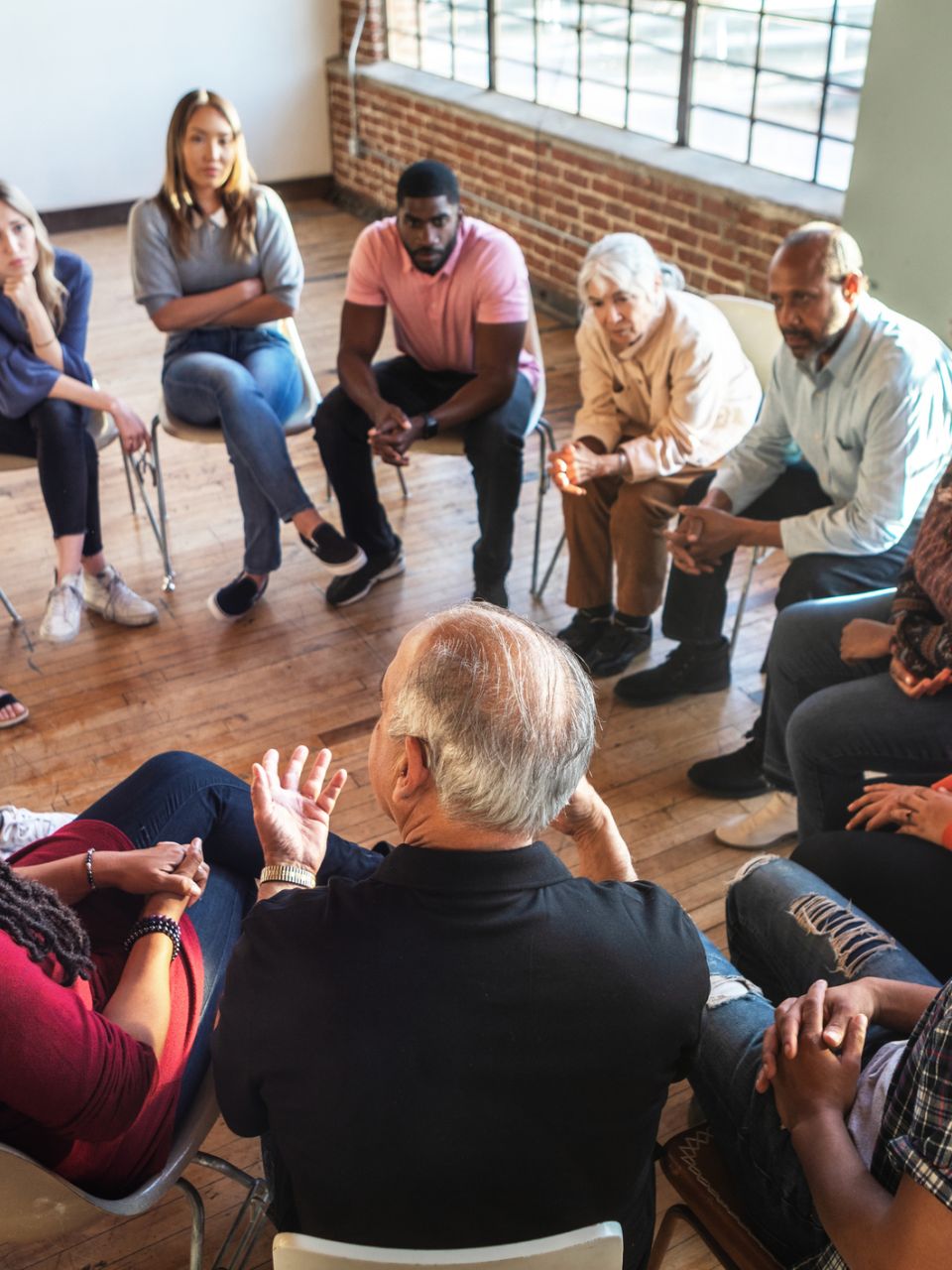Public involvement in research
Birmingham Health Partners’ vision for public involvement in research is to ensure our city is seen as the place where innovative research translates into improved health and economic growth.
Working in partnership with patients, carers, service users and members of the public is key to helping us achieve our vision, and ensuring that the research we do addresses the healthcare needs and priorities that matter most to the people of Birmingham.
We want everyone in Birmingham to have opportunities to be involved in our research, and so all our member organisations are committed to working in partnership with people and communities and learning from people’s insights and perspectives, based on their own lived experiences of healthcare.
Through our NHS-University-NIHR networks, we have formed strong links with local authorities and Voluntary, Faith, Community and Social Enterprise (VFCSE) organisations, enabling us to reflect all aspects of community diversity in our public involvement work.
If you are a member of the public and are interested in getting involved in research, you can find out more on our ‘Get involved in research‘ page.

“People-focused research in the NHS simply cannot be delivered without the involvement of patients and the public. No matter how complicated the research or how brilliant the researchers, patients and the public always offer unique, invaluable insight.”
Involving patients in your research
Public involvement in research describes how members of the public help to shape the design and delivery of health and care research by sharing their lived experiences and giving their advice. Their involvement makes research more relevant to our local communities and means that the results will help drive positive improvements in people’s lives.
Public involvement is different to research participation. Public involvement does not recruit individuals to take part in clinical trials or research studies. It’s a partnership between the public and researchers, where research is carried out with or by members of the public, rather than ‘to’, ‘about’ or ‘for’ them. This might include:
- Involvement in the choice of research topics
- Assisting in the design of a study
- Advising on the research project as part of a steering group
- Helping to conduct the research, for example interviewing participants
- Communicating the project – for example patient information leaflets
- Raising public awareness of research through open days or on social media
The perspectives of our public contributors (patients, carers, service users and the public), particularly those who have lived through illness or injury, will be different to those of clinicians and academics.
Public contributors have specialised knowledge of disease, their individual pathway from diagnosis to treatment, and how their quality of life was impacted at different stages. They bring experiences of different care providers and can provide perspectives and lived experience from a cross-section of ages, genders and ethnicities.
Good public involvement is also known to improve the quality and increase the impact of healthcare research, benefiting everyone – the patient, researcher, organisation and funders alike.
Many major funders, including the National Institute for Health and Care Research (NIHR) now mandate that comprehensive public involvement plans are included in all grant applications. And some journals, such as the BMJ, request evidence of high quality public involvement in studies as a requirement for publication.
All BHP partner organisations want there to be truly two-way influence on the future direction of research and its translation into benefit for patients, carers and services users across all of our partners. We support our clinicians and academics in this endeavour at every stage.
BHP’s role in public involvement is to bring partners together, share best practice, reduce duplication of effort and encourage all researchers to deliver the best possible public involvement activities to achieve the highest-quality research outputs.
This BHP public involvement page provides:
- A signposting service to existing public involvement support in each partner organisation
- Information about existing public involvement groups across partner organisations to enable collaboration between partners and reduce the need to duplicate groups
- Advice and guidance for public involvement delivery
- Timesaving resources for researchers such as public contributor role descriptors, data collection guidance and advice on how to pay your public contributors
This page will continue to grow and expand. If you feel there is additional information that would be useful to add to this site which could be of benefit to all partners, please do get in touch at PublicInvolvementBHP@contacts.bham.ac.uk. Resources currently under development include:
- Public involvement case study examples
- A “how to” guide – the practical basics to get you started
- Information about how to engage with your local communities
- Costing and funding for public involvement support
- Public involvement in discovery science
- Public involvement training programme
Public contributors can add value at any stage of the research cycle and can be involved in numerous ways throughout the life of your research project. If you are part-way through a project and haven’t yet involved the public, it’s never too late.
Researchers should include public contributors when:
- Identifying and prioritising
- Commissioning
- Designing and managing
- Undertaking
- Disseminating
- Implementing
- Evaluating impact
Download pre-prepared public involvement templates, guidance and advice here (click or tap each item to view and download):
Setting up a public involvement group
Role descriptors
- Public involvement contributor role descriptor
- Public involvement co-applicant role descriptor
- Independent Advisory Group member role descriptor
Advertising a public involvement opportunity
Running a public involvement meeting
Recording impact of public involvement for future reporting
- GRIPP2 short form version
- PIRIT TOOL – Public Involvement in Research Impact Toolkit (PIRIT) – Marie Curie Research Centre – Cardiff University (external link, no download)
Find guidance documents, policies and procedures here (external links):
The NIHR Birmingham Biomedical Research Centre has produced a number of case studies showcasing excellence in public involvement. They can be viewed/downloaded as Powerpoint slides here (click or tap each item):
- Inflammatory arthritis – development of a trial of preventative treatments for those at risk of rheumatoid arthritis
- Inflammatory arthritis – exploring the expectations, needs and concerns of people with rheumatoid arthritis commencing methotrexate
- Public insight helping to shape the development of a new osteoarthritis drug – sarcopenia and multimorbidity
- Sharing PPIE best practice in women’s health across the globe
- Women’s metabolic health: International Women’s Day health inequalities workshop – PCOS
- Women’s metabolic health theme – community engagement on PCOS
Staff from Birmingham Health Partners’ member organisations can contact our team at PublicInvolvementBHP@contacts.bham.ac.uk with any queries about public involvement.
BHP public involvement groups
Each BHP member organisation has experts in public involvement who can provide researchers with advice and guidance – see your organisation below to find out how to access support and which public involvement groups already exist. It’s also well worth looking at other partners outside your employing organisation, as they may also have relevant groups.

University of Birmingham

University Hospitals Birmingham

Sandwell and West Birmingham

Birmingham and Solihull Mental Health





